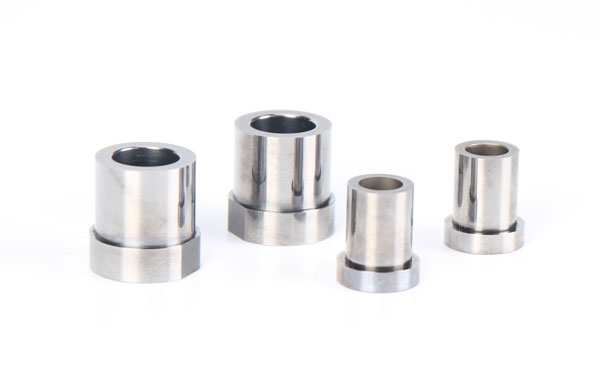Manufacturing Process and Performance Application of Tungsten Carbide Bushings
Heat Treatment Processes for Tungsten Carbide Bushings Normalizing: The steel material or steel parts are heated above the critical point AC3 or ACM, held for an appropriate time, and then […]
Heat Treatment Processes for Tungsten Carbide Bushings
Normalizing: The steel material or steel parts are heated above the critical point AC3 or ACM, held for an appropriate time, and then cooled in air to obtain a pearlitic structure through heat treatment.
Our factory business: carbide parts, mold parts, medical injection molds, precision injection molds, teflon PFA injection molding, PFA tube fittings. email: [email protected],whatsapp:+8613302615729.
Annealing: The hypoeutectoid steel workpieces are heated to 20-40 degrees above AC3, held at temperature, and then slowly cooled in the furnace (or by sand cooling, lime cooling) to below 500 degrees before being cooled in air to complete the annealing process.
Solution Heat Treatment: The alloy is heated to a high-temperature single-phase region, held at a constant temperature to fully dissolve excess phases in the solid solution, and then rapidly cooled to obtain an oversaturated solid solution through heat treatment.
Aging Treatment: After the alloy undergoes solution heat treatment or cold plastic deformation, it is placed at room temperature or slightly above room temperature, and its properties change over time.
Solid Solution Strengthening: Through solution treatment, the various phases in the Tungsten Carbide bushing are fully dissolved, strengthening the solid solution structure, improving toughness and corrosion resistance, and eliminating stress and softening phenomena to facilitate subsequent processing and forming.
Age Hardening: The Tungsten Carbide bushing is heated to a temperature where the strengthening phase precipitates, and held at temperature to allow the precipitation of the strengthening phase, thereby achieving a hardening effect and increasing the material’s strength.
Quenching: The steel is austenitized and then cooled at an appropriate cooling rate to cause a heat treatment process in which all or part of the workpiece undergoes martensitic or other unstable structural transformations within the cross-section.

Application and Performance of Tungsten Carbide Bushings
Tungsten Carbide bushings are pressed into the inner bore of the pin ear with a certain amount of interference. To reduce axial deformation after compression and improve fatigue life, shorter multi-section Tungsten Carbide bushings are often used instead of longer single-section bushings. Tungsten Carbide bushings are prone to cracking in stress concentration areas, peeling in bonded areas, and wear in compressed and folded bending areas. To avoid stress concentration, facilitate pressing, and prevent damage, the ends of the bushings should be designed with rounded corners.
Design of Rubber Bushings for Tungsten Carbide Bushing Track Plates
The rubber bushings for Tungsten Carbide bushing track plates are cylindrical in shape, closely bonded to rigid metal track pins through vulcanization, and press-fitted with an interference fit into the inner bore of the track plate pin ear. Their design and calculation involve stress analysis of the rubber bushings, determination of the assembly interference, setting of the pre-twist angle, and selection of the bushing rubber compound. When analyzing the shear stress caused by bushing torsion, it is assumed that the rubber bushing remains cylindrical before and after deformation and that the concentric layers are circular, with the outer layer of the bushing bearing the torque M.
Performance Characteristics of Tungsten Carbide Bushings
Tungsten Carbide bushings exhibit excellent wear resistance, with a dense internal structure, no pores or sand holes, a bright appearance, and a unique color. More importantly, they have relatively high hardness. Additionally, Tungsten Carbide bushings have good corrosion resistance, especially in atmospheric and freshwater environments. They are not prone to seizing during use. Their corrosion resistance is mainly reflected in their ability to resist corrosion from chemical elements such as dilute sulfuric acid, hydrochloric acid, and fatty acids. Even in the absence of lubricants or with water-based lubricants, Tungsten Carbide bushings maintain good slidability and self-lubricating properties. Furthermore, they have strong compression resistance and can withstand significant bearing side pressures, making them suitable for operation under high load pressures.of lubricants or with water-based lubricants, tungsten steel bushings can maintain good sliding and self-lubricating properties. Furthermore, they have strong compressive strength and can withstand significant lateral pressure from bearings, making them suitable for operation under high-load pressure conditions.






